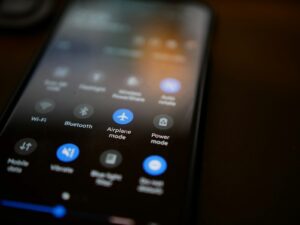The Importance of Low-Power Communication Protocols in IoT
Low-Power Communication Protocols in IoT: Extending Battery Life
Low-power communication protocols in IoT are transforming the landscape of smart technology by significantly extending the battery life of IoT devices compared to traditional technologies. This advancement is particularly critical in regions like Saudi Arabia and the UAE, where the adoption of IoT solutions is rapidly growing. In smart cities like Riyadh and Dubai, IoT devices are ubiquitous, ranging from environmental sensors to smart home devices, and the efficiency of these devices is paramount.
Low-power protocols such as Zigbee, Bluetooth Low Energy (BLE), and LoRaWAN are designed to minimize energy consumption while maintaining reliable communication between devices. Unlike traditional communication protocols that often require significant power, these low-power alternatives ensure that IoT devices can operate for extended periods without frequent battery replacements. This is especially important for applications where devices are deployed in hard-to-reach locations or where continuous operation is critical.
In Saudi Arabia, the implementation of low-power IoT protocols is evident in various sectors. For example, in Riyadh’s smart infrastructure projects, environmental sensors using Zigbee technology monitor air quality and weather conditions with minimal power consumption. This allows the sensors to provide continuous data over long periods, enabling city officials to make informed decisions about environmental policies and public health initiatives. By leveraging low-power protocols, Riyadh ensures the sustainability and reliability of its IoT deployments.
Achieving Energy Efficiency with Advanced IoT Communication
The role of low-power communication protocols in IoT extends beyond battery life extension to achieving overall energy efficiency in smart systems. These protocols are designed to optimize data transmission, reducing the amount of power required for communication. For instance, BLE is engineered for short bursts of data transmission, making it ideal for applications like wearable health monitors and fitness trackers, which require periodic data updates without draining the battery.
In the UAE, businesses and government initiatives are adopting low-power IoT protocols to enhance energy efficiency. Dubai’s smart city projects, for instance, utilize LoRaWAN for wide-area network coverage with low power consumption. This protocol is particularly useful for applications such as smart metering and utility management, where devices need to transmit small amounts of data over long distances. By using LoRaWAN, Dubai can monitor and manage its utilities more efficiently, reducing energy waste and operational costs.
Saudi Arabia’s agriculture sector is also benefiting from low-power IoT protocols. Farmers in remote areas use LoRaWAN-enabled soil moisture sensors to optimize irrigation practices. These sensors transmit data on soil conditions to central systems, which then adjust watering schedules accordingly. This not only conserves water but also ensures that crops receive the optimal amount of moisture, enhancing agricultural productivity and sustainability. The energy efficiency achieved through low-power communication protocols is a key factor in the success of these IoT applications.
Implementing Low-Power Protocols for Sustainable IoT Solutions
Strategic Deployment of Low-Power IoT Technologies
The strategic deployment of low-power communication protocols in IoT is essential for creating sustainable and scalable smart solutions. By carefully selecting and implementing the appropriate protocols, businesses and city planners can ensure that their IoT systems are both efficient and reliable. This involves evaluating the specific needs of the application, such as data transmission frequency, range, and power requirements, and choosing the protocol that best meets these criteria.
In Riyadh, strategic deployment of low-power IoT technologies is evident in smart grid projects. These projects use Zigbee and LoRaWAN protocols to monitor and manage electricity distribution networks. By collecting real-time data on energy usage and grid performance, these protocols enable efficient energy management and reduce the risk of power outages. The low power consumption of these protocols ensures that monitoring devices can operate continuously without frequent maintenance, supporting the long-term sustainability of the smart grid.
Dubai’s focus on innovation and sustainability is reflected in its use of low-power IoT protocols for smart transportation systems. BLE and Zigbee are employed in traffic management systems to monitor vehicle flow and optimize traffic signal timings. This real-time data collection and analysis help reduce traffic congestion and emissions, contributing to the city’s environmental goals. The low-power nature of these protocols ensures that sensors and communication devices have a minimal impact on the overall energy consumption of the transportation network.
Future Trends in Low-Power IoT Communication
As IoT technology continues to evolve, future trends in low-power communication protocols in IoT are expected to further enhance the capabilities and efficiency of smart systems. Emerging protocols such as NB-IoT (Narrowband IoT) and 6LoWPAN are designed to provide even greater energy efficiency and coverage. NB-IoT, for example, offers low power consumption and extended range, making it ideal for applications such as smart agriculture, environmental monitoring, and asset tracking.
In Saudi Arabia, the adoption of NB-IoT is gaining momentum, particularly in smart city initiatives. NB-IoT’s ability to support a large number of devices with minimal energy usage makes it suitable for large-scale deployments. For instance, smart parking solutions in Riyadh use NB-IoT to monitor parking space availability and guide drivers to open spots, reducing traffic congestion and emissions. The low power consumption of NB-IoT ensures that these sensors can operate for years without battery replacement, enhancing the sustainability of the system.
Dubai’s commitment to technological advancement is evident in its exploration of 6LoWPAN for IoT applications. 6LoWPAN enables IPv6 communication over low-power wireless networks, providing seamless integration with existing internet infrastructure. This protocol is ideal for smart home and building automation, allowing devices to communicate efficiently while conserving energy. By adopting 6LoWPAN, Dubai can enhance the connectivity and functionality of its smart systems, driving innovation and efficiency.
Conclusion: Embracing Low-Power Protocols for Efficient IoT Solutions
In conclusion, low-power communication protocols in IoT are pivotal in extending the battery life of IoT devices and achieving overall energy efficiency. By strategically implementing these protocols, cities like Riyadh and Dubai can optimize their smart systems, reduce operational costs, and enhance sustainability. The continuous evolution of low-power IoT technologies promises even greater capabilities and efficiency, paving the way for more innovative and sustainable smart solutions. Embracing these advancements ensures that IoT systems can meet the growing demands of modern urban environments while conserving energy and resources.
—
#LowPowerCommunicationProtocols, #IoTDevices, #BatteryLife, #EnergyEfficiency, #SaudiArabia, #UAE, #Riyadh, #Dubai, #ArtificialIntelligence, #ModernTechnology, #BusinessSuccess, #LeadershipSkills, #ProjectManagement













